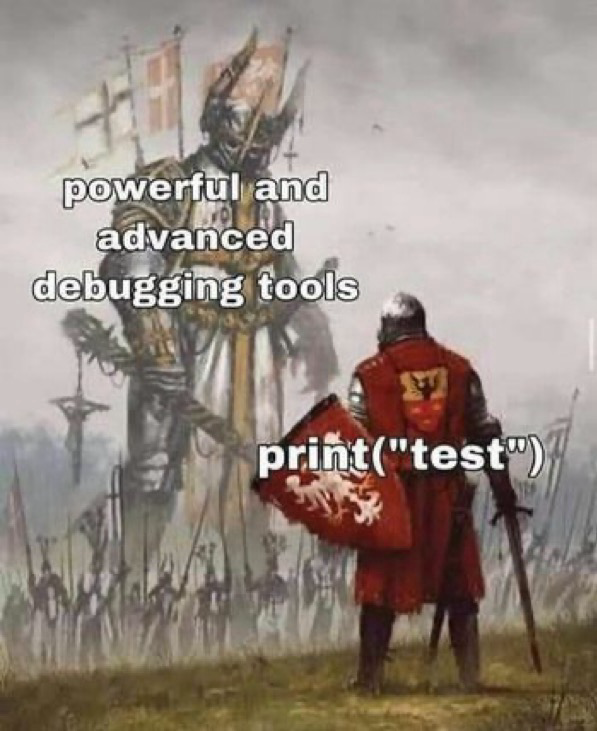Posts
156Following
384Followers
310K. Ryabitsev 🍁
monsieuricon- vger.kernel.org delivers about 4.5 million messages per day
- 70% of that is linux-kernel@vger, with about 3.2 million messages delivered per day
- a very remote second is netdev@vger (300,000 messages delivered per day)
- even a more remote third is kvm@vger (133,000 messages delivered per day)
Current migration stats:
Out of the total of 203 public vger lists:
- 48 lists will be sunset (due to obsolescence/inactivity)
- 40 lists are already migrated to new infra
- 115 still reside on legacy infra
The 40 migrated lists are about 788,000 messages daily, or ~20% of all traffic, so 80% of all mail traffic is still going through the legacy infra.
I hope to complete all migrations by this holiday season.
Dr. Damien P. Williams, Magus
Wolven@ourislandgeorgia.netA reminder for non-academics: If you ever can't find access to an #academic's paper or article, you should feel free and encouraged to reach out to them to ask for a pre-print version.
99.9% of the time, they will not think of it as an imposition; they will, in fact, be EXTREMELY gratified by your interest.
This is something about which I didn't really know the rules and expectations until I was in grad school for the first time, and that is a) pretty late in the game and b) not a context most people will literally ever experience.
So now I try to put it out there to the general public whenever it occurs to me, and especially to my undergrad students.
https://scholar.google.com/citations?user=riv547sAAAAJ&hl=en
Björkus "No time_t to Die" Dorkus
thephd@pony.socialGot Stun Locked Again, so it's time to dump a rant I made elsewhere:
C is not a language for direct control of the hardware. C is a langauge that is coded to the semantics of an Abstract Machine specified in a document. It's no more capable of hardware control that e.g. Rust or Zig. What it has is a wide variety of pre-existing implementations that allow you to touch that hardware, but most of that control was programmed in an assembly language or worked into the hardware/firmware by somebody.
C is not more suitable for hardware and your computer is not a PDP-11. (This is part of why "Nobody writes ISO C" is a thing. C, the language K&R made, the language that got standardized, at any point in its lifetime, was never good enough for a kernel. It just let people coordinate stuff in the cheapest way possible and accepted extensions.)
The part that's extra nutso is that the last 20 years were people who held this exact belief -- that C was just a thin layer over the hardware -- get bodied, over and over again. Compiler vendors gave them the big middle finger every time they said "wait, no, UB is for hardware!", and compiler vendors traded in UB for (sometimes negligible) speed ups.
To still believe C is "for the hardware" in today's day and age where GCC will literally run your for loop for eternity because you tried to access an array out-of-bounds and it found out about it, or Clang will solve fermat's last theorem due to a loop, is magic shroom thinking. You can access the hardware just as good with Java by using the Pointer class, you can hit the same register that the shitty ISA Manual fucking lied about by writing the same integer address into the Pointer class and dumping out a 2-byte integer to the right place.
C is not magic and you're not improving its design by insisting it is, for the love of God start Evaluating Your Tools Properly. Yer an engineer, not a fucking wizard, Harry.
Lennart Poettering
pid_eins@mastodon.socialDid you know you could control brightness of the red dot on the i of the "ThinkPad" on the top-side of your thinkpad? I sure didn't:
this turns it off:
echo 0 | sudo tee /sys/class/leds/tpacpi\:\:lid_logo_dot/brightness
and this turns it on:
echo 255 | sudo tee /sys/class/leds/tpacpi\:\:lid_logo_dot/brightness
I don't really know what this information is good for, but hey, isn't it awesome to have a 1px display on the outside of your laptop?
Andrew Ayer
agwa@agwa.name- Force browsers to accept government certificate authorities
- Ban additional security checks on certificates (such as Certificate Transparency) unless the EU agrees to them
This would undo 10 years of improvements to encryption on the Web and create an environment very favorable to MitM attacks.
If you're an EU citizen, consider writing to the MEP responsible for the eIDAS file, Romana JERKOVIĆ (https://www.europarl.europa.eu/meps/en/112747/ROMANA_JERKOVIC/home), to voice your concern.
Learn more at https://last-chance-for-eidas.org/
John Sullivan
johns@librem.one@LWN is hiring: https://lwn.net/Articles/949461/ -- we'd all benefit from someone excellent in this position -- spread the word.
Charlie Stross
cstross@wandering.shopREMINDER: ChatGPT, Stable Diffusion, and other large trained neural models are NOT "artificial intelligence", they're just stochastic parrots, remixing and regurgitating what they've been fed. There's no theory-of-mind involved, so no understanding: there's no "there" there. (A real live parrot exhibits more intelligence than this.)
Don't call it AI; call it parrot-tech. That way you'll have a better perspective on what it can (and can't) do.
LWN.net is now @LWN@lwn.net
LWN@fosstodon.orgHelp wanted at LWN https://lwn.net/Articles/949461/ #LWN
Toke Høiland-Jørgensen
tokeJakob Härter
jakobhaerter@chaos.socialThe things you miss when you take the plane to travel from Cologne to Helsinki, instead of using train and ferry:
– Copenhagen, Malmö and Stockholm
– Breathtaking views of Northern Europe
– Incredibly delicious food and super friendly staff onboard the swedish high speed train
– Sleeping onboard a ship while crossing the baltic sea
– Europe‘s longest railway bridge
Thanks for the inspiration, @sebwilken and @jon!
#CrossBorderRail #SlowTravel #StayGrounded #Finland #Helsinki
kcxt (casey)
cas@social.treehouse.systemswould anyone be interested in remote access to any of the following devices for the purposes of #Linux mainline development and testing? You'd be able to power cycle the device and boot an Android boot.img (kernel + dtb + ramdisk), I'm also open to using these devices in CI
* OnePlus 6/6T - #Qualcomm Snapdragon 845
* OnePlus 7 and/or 7 pro - #Qualcomm #Snapdragon 855 / sm8150
* OnePlus 9 Pro - Snapdragon 888 (sm8350), however i haven't yet found out how/if UART is exposed on this device.
* Google Pixel 2 XL, 3, or 3 XL - Snapdragon 835 (msm8998) or Snapdragon 845 (sdm845). (Only have one usb-cereal adapter so only one of these is viable right now)
* #Fairphone 2 - MSM8974
* #Fairphone 5 - QCM6490
* #LG G6 - msm8996 (if someone can find UART and find a workaround for the "charger wet" detection being stuck on)
* #Samsung j3 (j3xnlte) - some spreadtrum SoC - Only if you can find UART for me
I don't have things fully set up here but I'm trying to figure out what i should prioritise.
If any of these sounds useful to you then please get in touch with me! I'm especially interested in folks from the #LinuxMobile community, #Kernel maintainers, or anyone else with an interest in upstream Linux support on phones. Please have some kind of public presence in a related field and tell me what your usecase is.
* DM me on matrix - @ caleb:postmarketos.org
* Email me - caleb@connolly.tech
Please boost for reach!
#FOSSMobile #postmarketOS #Android #Embedded #BoardFarm #Testing #CI
modulux
modulux@node.isonomia.netIf you're an #EU citizen, I strongly encourage you to take a look and consider signing this European Citizen's Initiative (ECI) that calls for the establishment of a #tax on great #wealth to fund a just ecological and social transition: https://citizens-initiative.europa.eu/initiatives/details/2023/000006_en
Boosts very welcome.
Iamreddave
Iamreddave@mastodon.ieYou can make body facts sound weirdly threatening by adding 'currently' to them.
Your teeth are the only parts of your skeleton currently visible
The femur is currently the longest bone in your body
Christian Brauner 🦊🐺
brauner@mastodon.social@vegard @marcan @CyReVolt @lschuermann @monsieuricon imho, anyone who's getting into kernel development or who is open to changing their workflow should use b4 right away and avoid using git-send-email
Jan Schaumann
jschauma@mstdn.socialKen Thompson's original Unix backdoor of "Reflections on Trusting Trust" fame was apparently never published. 40 years (!) later, here it is: 99 lines of code plus a 20-line shell script. That's it.
Nicely annotated and explained by Russ Cox:
scy
scy@chaos.socialHoly shit I think I’m in love.
#Protomaps, a way to serve vector #maps of the entire world using a single static file and HTTP range requests.
It’s basically a static site generator for interactive maps. Tile servers are pretty much obsolete now. No database needed, you can run your interactive, smooth-zooming vector map from any HTTP storage. S3, Caddy running on your Wi-Fi router, even GitHub pages.
It’s open source & free to use. Wow. 🤯
d@nny disc@ mc²
hipsterelectron@circumstances.runthe writing on this is haphazard but there are some absolute zingers https://helvede.net/@trexplex/111040860600211293








